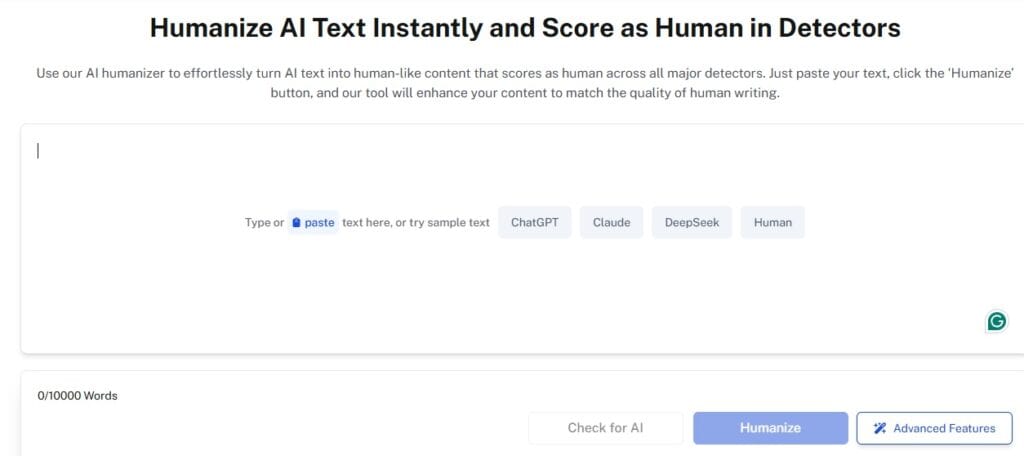Ever picked up a book based on a review, only to wonder if the reviewer read the same story you did?
Writing a book review is like having a thoughtful conversation with fellow readers, but getting it right can be trickier than it seems.
Whether you are reviewing for your blog, Goodreads, or a literary journal, this guide will help you craft reviews that are both insightful and engaging.
By the end, you will have all the tools you need to write critiques that readers actually want to read.
Key Takeaways
- The most critical step in rewriting is to maintain the original core message and emotional tone, acting as a translator from complex language to clear language.
- You should apply the 7 Essential Techniques, using strategies like paraphrasing, breaking up long sentences, and prioritizing active voice to systematically boost clarity and flow.
- The goal is objectivity, not opinion. Always avoid adding personal feelings, interpretations, or detailed critiques; stick strictly to the book’s factual content and structure.
- Never rewrite a sentence in isolation; always consider the surrounding paragraph to ensure the new sentence contributes to the overall rhythm and narrative progression.
What Is a Book Review?
Let’s clear something up right away: a book review is not just telling people whether you like a book or not.
Think of it as a thoughtful discussion that helps others decide if they should invest their time in reading it.
A good review balances personal reaction with critical analysis—kind of like being both a passionate reader and a careful observer at the same time.


Never Worry About AI Detecting Your Texts Again. Undetectable AI Can Help You:
- Make your AI assisted writing appear human-like.
- Bypass all major AI detection tools with just one click.
- Use AI safely and confidently in school and work.
A professional book review typically includes:
- An engaging hook that draws readers in
- Basic information about the book (title, author, genre, publication date)
- A brief plot overview without major spoilers
- Analysis of writing style, themes, and character development
- Discussion of the book’s strengths and weaknesses
- Specific examples to support your opinions
- A clear recommendation for potential readers
Examples of Different Review Types
Let’s look at some examples that we wrote to understand different types of book reviews:
| Review Type | Focus and Tone | Example Quote |
| Academic Review | Philosophical depth, critical analysis of literary merit. | “Haig’s metaphysical narrative explores the quantum mechanics of regret through the lens of magical realism, offering both philosophical depth and emotional resonance. While the premise is not entirely novel, the execution creates a compelling meditation on choice and satisfaction.” |
| Consumer Review | Personal reaction, emotional impact, practical recommendation. | “This book kept me up until 3 AM! The characters felt like old friends, and I could not wait to see what happened next. Fair warning: the middle section drags a bit, but the ending makes up for it.” |
| Professional Review | Blends literary critique with social commentary, focuses on structure and theme. | “Smith crafts a narrative that defies easy categorization, blending elements of literary fiction with keen social commentary. The result is both timely and timeless, though occasional pacing issues in the third act slightly diminish its overall impact.” |
Key Elements of a Book Review

A strong book review goes beyond simple praise or critique—it dives into the heart of the book.
To write a review that resonates, you need to balance personal reactions with a critical analysis of themes, characters, writing style, and plot.
Plot Summary vs. In-Depth Analysis
Here’s where many reviewers stumble – they spend too much time retelling the story and not enough time analyzing it.
Your plot summary should be like a movie trailer, giving readers just enough to understand the context without spoiling the experience.
| Book Title | Poor Summary (Too Much Plot) | Better Summary (Focuses on Conflict) |
| Pride and Prejudice | Elizabeth Bennet meets Mr. Darcy. They do not like each other at first. Then there is stuff with her sisters. Lydia runs away. Eventually, Elizabeth and Darcy fall in love and get married. | In Georgian-era England, the sharp-witted Elizabeth Bennet navigates social expectations and her own prejudices while encountering the proud Mr. Darcy. Their initial mutual disdain evolves into understanding as both characters confront their own flaws against a backdrop of class, reputation, and family obligation. |
| The Seven Husbands of Evelyn Hugo | An old movie star tells her life story to a journalist. She talks about all her husbands and reveals secrets. There is a surprise twist at the end. | Aging Hollywood icon Evelyn Hugo breaks decades of silence by choosing an unknown journalist for her definitive biography. As she recounts the story of her seven marriages, a more complex tale emerges—one of ambition, sexuality, and the prices paid for fame in twentieth-century America. |
Evaluating Characters, Themes, and Style
- Characters: Consider their development, motivations (Are their actions believable?), relationships, and overall complexity.
- Themes: Ask what bigger questions the book explores (e.g., justice, sacrifice) and how these themes are developed throughout the story.
- Writing Style: Examine the prose quality (flowery, sparse, technical?), the pacing (Does the story move at an appropriate speed?), and the effectiveness of the chosen point of view.
How to Structure a Book Review
Organizing your thoughts is crucial to crafting a review that is clear and engaging.
From your opening hook to your final recommendation, each section has a specific role to play.
1. Introduction: Hook and Context
Your opening paragraph needs to accomplish several things: hook the reader with an interesting observation, provide essential book information, set the tone for your review, and give a sense of your overall impression.
Example: “Some books grab you by the collar and do not let go until the final page. Others slowly weave their spell, like a warm cup of tea on a rainy afternoon. Sarah Waters’s ‘The Little Stranger’ belongs to the second category—a masterclass in slow-burning gothic tension that proves some haunted house stories are more about the people than the ghosts.”
2. Summary of the Book: Conflict, Not Resolution
A summary is a shortened version of a work.
When writing your summary, focus on the main plot points and avoid spoilers (if you must spoil something, be sure to warn readers first!).
Aim to keep the summary concise, ideally within one to two paragraphs.
A good formula:
- Introduce the main character and their starting situation.
- Describe the central conflict or problem.
- Hint at the stakes involved.
- Leave the resolution completely unclear.
3. Analysis and Personal Evaluation (The Core)
This section should make up about 60% of your review.
Structure it around key aspects:
- Writing Style: How does the author’s prose serve the story? What makes their voice unique? Include short, specific passages as examples.
- Character Development: Which characters feel most authentic? How do they grow or change?
- Plot and Pacing: Does the story flow naturally? How well are surprises or twists handled?
- Themes: What deeper messages emerge? How effectively are they explored?
4. Conclusion and Recommendation
Conclude with purpose by summarizing your main impressions, identifying who would most enjoy this book, and, if helpful, comparing it to similar works.
Include a rating if your platform requires one.
Example: “Overall, this novel is an intriguing mystery with well-crafted suspense and engaging characters. Fans of thrillers and whodunits will enjoy the unpredictable twists and turns that keep the reader guessing until the end. It is a great pick for those who enjoyed Gone Girl or The Girl on the Train. I would rate it a 4.5 out of 5 for its strong plot and memorable characters.”
How Long Should a Book Review Be?
Reviews generally range from 500-2000 words but may be longer or shorter depending on several factors, including the review’s purpose, audience, and publication platform.
| Platform | Ideal Length | Focus and Requirements |
| Goodreads/Amazon | 200–300 words | Focus on personal reaction and clear recommendation. |
| Personal Blog/Medium | 500–1,000 words | More room for analysis, quotes, and personal anecdotes. |
| Literary Journals | 1,000–1,500 words | In-depth analysis required, discussion of literary merit and broader context. |
| Newspapers/Magazines | 500–800 words | Emphasis on newsworthiness, cultural relevance, and clear, concise writing. |
Need help staying within word limits? Use our Undetectable AI’s Word Counter to track your word count and optimize your writing effectively.

How AI Tools Can Help with Analysis and Structure
AI tools have become invaluable in helping reviewers analyze, structure, and organize their thoughts more effectively, enhancing the clarity and depth of their critiques.
1. Analyzing Key Themes and Patterns
AI can rapidly sift through text to identify recurring themes, character developments, or even subtle plot motifs that might otherwise require a reread to catch.
For example, using an AI tool can help you summarize lengthy chapters, giving you a clearer picture of the book’s core themes before you start writing the analysis.
2. Structuring Your Review with a Framework
Once you have gathered your insights, AI can help create a clear, organized structure for your review.
By guiding you through standard review elements—from a concise plot summary to theme analysis and final recommendation—tools like ChatGPT streamline the process, making sure your review flows naturally and remains cohesive.
3. Enhancing Language and Tone
AI tools like Humanizer AI by Undetectable AI can refine the tone of your review, making it sound more authentic and engaging.

While some AI tools can sometimes create responses that feel a bit too robotic, our AI Humanizer adjusts language nuances to feel more personal and natural.
Tips for Writing a Balanced Book Review

Here are some tips to follow to make sure you craft the most balanced book review possible:
1. Take Notes While Reading
Enjoy your reading time, but jotting down notes along the way can greatly enhance your review.
Mark passages that stand out, note any emotional reactions, and keep track of questions that come up.
Look for recurring patterns or themes, as these details will enrich your perspective and provide useful insights for your review.
2. Consider Multiple Perspectives
While reading, think about how different types of readers might interpret the book.
Acknowledge the genre’s conventions and consider the author’s intentions behind specific choices.
It is also essential to recognize your own biases and how they may shape your perspective. This approach adds depth to your review and helps create a balanced view of the book.
3. Highlight Strengths and Weaknesses
To give readers a well-rounded review, explore both what worked well in the book and what did not.
Identify successful elements and areas for improvement, and explain why you think they succeeded or fell short.
Reflecting on both strengths and weaknesses offers readers a complete picture of the reading experience.
For credible critique, a balanced focus on strengths and weaknesses is highly emphasized.
4. Back Up Opinions with Examples
Avoid general statements and instead support your opinions with specific examples.
For instance, rather than saying, “The dialogue was bad,” explain why:
“The characters’ conversations felt stilted, especially during emotional scenes.
For example, when Sarah confronts John about his betrayal, their exchange reads more like a business meeting than a heated argument.”
Concrete examples like these strengthen your points and make your critique more credible.
5. Use Specific Examples
Incorporate short quotes or descriptions of particular scenes to illustrate your points.
Refer to notable character actions or key developments, and point out unique stylistic choices that stood out.
Using specific examples throughout your review helps readers understand your perspective and adds detail that makes your review engaging and insightful.
You can try the AI Humanizer in the widget below and effortlessly make your book reviews more authentic and engaging!
Conclusion
Writing effective book reviews is a skill that develops with practice.
Start with these guidelines, but do not be afraid to find your own voice.
Remember that your goal is to help readers make informed decisions about their next book while contributing meaningfully to literary discourse.
Whether you are reviewing for pleasure or profession, your thoughtful analysis can help guide readers to their next great read.
Keep practicing, keep reading, and most importantly, keep sharing your unique perspective with the reading community. The best reviews come from a place of genuine engagement with the text.
And if you want to give your writing an extra polish, consider using Undetectable AI, a tool that ensures your writing is natural, authentic, and reader-friendly.
